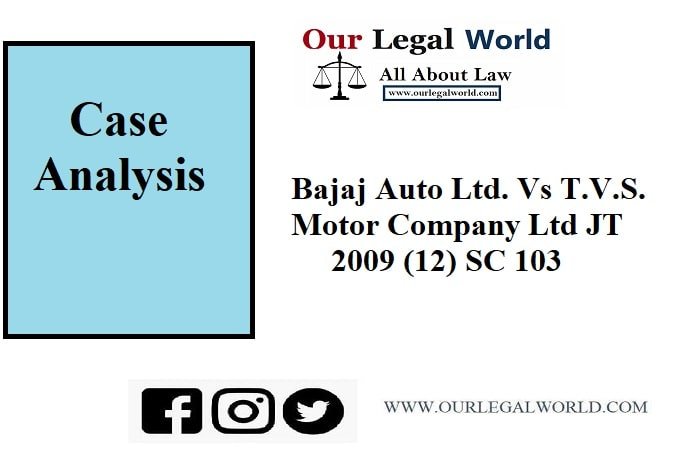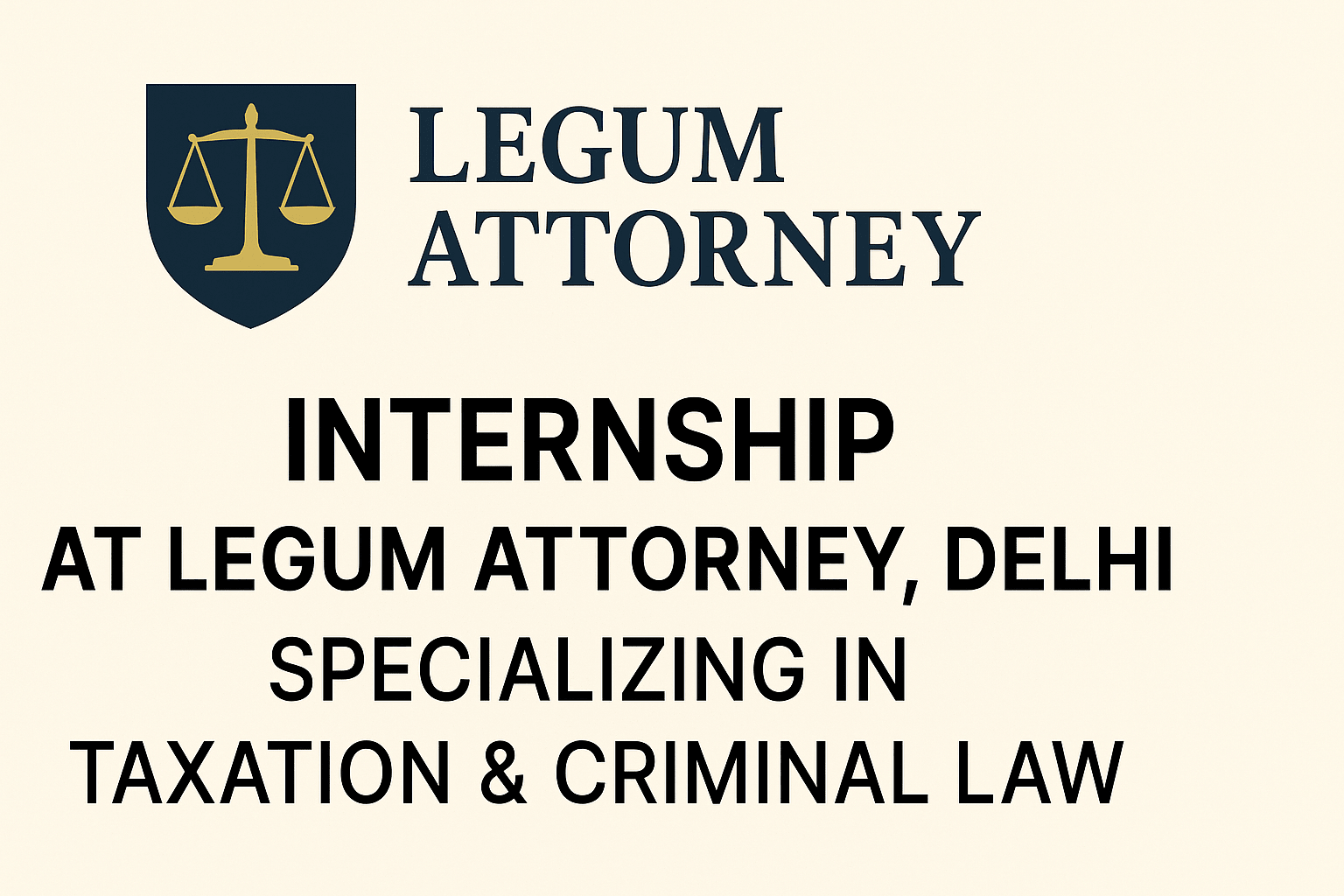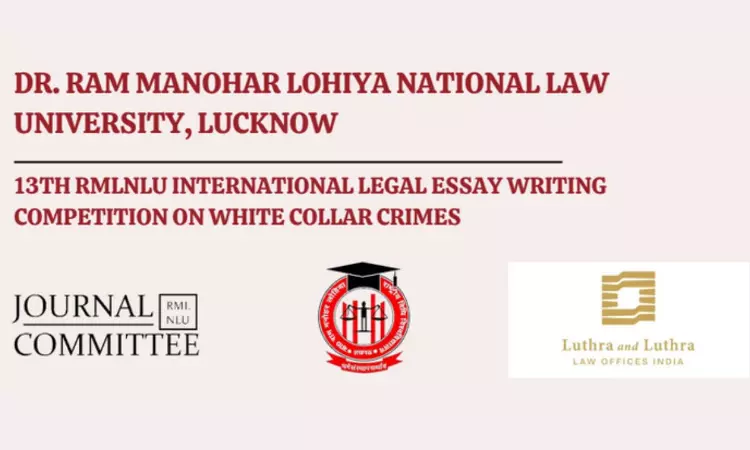Bajaj Auto Ltd. Vs T.V.S. Motor Company Ltd JT 2009 (12) SC 103: Case Analysis
Introduction
Patent is the exclusive right of the invention given to the holder rendering him to enjoy the monopoly along with the profits in relation to the usage of that invention. The patent act 1970 has provisions relating to the enforcement of patent rights and protects the interest of the holder
Bajaj Auto Ltd. Vs T.V.S. Motor Company Ltd is a landmark case of a dispute with regard to unauthorized application of the patent of the Digital Twin Spark Ignition (DTSi). It is an intellectual property of Bajaj auto limited, in DTSi technology, the two spark plugs at either end of the combustion chamber helps faster and better combustion.
All this starts back in 2002 when Bajaj filed an application for the patent of DTS-i technology on July 16 in the Indian Patent Office. Bajaj also filed a PCT application (The Patent Cooperation Treaty- it is a international patent treaty which provides unified procedure for filing patent applications in contracting States) on October 30, 2003. On July 7 2005 the patent was granted to the Bajaj Auto Ltd.
Terms and sections Often used in this case study explained below:
The doctrine of equivalents (also termed as doctrine of pith and marrow)is a legal doctrine where in a court is empowered to hold a party to a suit liable for infringement of a patent either directly or indirectly. This means that even if a party does not infringe a patent right/claim directly or literally but nevertheless is equivalent to the claimed invention, the doctrine of equivalents will come into play.
Section 106 of the Patents Act 1970 provides with the Power of court to grant relief in cases of threats of infringement proceedings on baseless grounds to the defendant. This section suggests that mere knowledge of presence of a patent will not amount to constitute a threat to further proceedings against any party.
Section 108 of the Patents Act 1970 provides for reliefs in suit for infringement. This section is often used for seeking temporary reliefs for the plaintiff.
Case Analysis
Facts
There are two suits in this case. The first one was when, Bajaj claims unauthorised application of his patent regarding DTSi against TVS at Chennai High Court in 2007 for the relief of permanent injunction under section 108 of the Patents Act 1970, restricting from using the technology described in this patent for manufacturing, marketing, selling, offering for sale or exporting 2/3 wheelers, including the proposed 125-CC FLAME motorcycle containing an internal combustion engine. Plaintiffs also claimed damages for infringement of patent.
While the suit was pending in the high court, the plaintiff filed an application for seeking the temporary injunction for the same till the pendency of the suit.
TVS Motor Company brought a subsequent suit under section 106 of the Patent Act in the same High Court, claiming that Bajaj is making “groundless threats of patent infringement”.
To this, the Madras High Court in contrary issues a temporary injunction restraining TVS to a limited extent meaning thereby it could execute pending (already taken) orders but couldn’t take fresh orders.
Later to this order, TVS pleaded for vacating this injunction order and the division bench of the High Court agrees and vacates the order later.
To this, an appeal was filed before the hon’ble Supreme Court by the petitioners against the order of the division bench of Madras High Court.
Issues
Whether the Defendants infringed the patent or combination even though it made some improvements to the main patented article?
Order
Supreme Court expressed its unhappiness on the pendency of the case before single bench of Madras HC at the interlocutory stage for such a long time as the suit was filed in December, 2007 and yet, even written statement has not been filed.
SC said that as they have already observed in the case of M/s. Shree Vardhman Rice & Gen Mills vs. M/s Amar Singh Chawalwala that the matters in relation to patent trademark and copyright must be expeditiously decided by the trial court rather than disputing on the point of grating and refusing injunctions to each other. Such suits go on for years and years and are not decided properly which is not a good practise.
SC directed all courts and tribunals to follow this case judgment strictly, punctually and faithfully.
Hence without the analysing the merits of the present case, SC directed the respondent to file a written statement as soon as possible if not already filed so. SC also directed the madras HC to hear the case on day to day basis. No adjournment order shall be granted and the suit shall be disposed of on or before 30th November 2009.
SC court also directed the Madras high court to appoint a receiver in this regard who will keep all the records of the sale proceeds of the TVS till the pending of the suit.
The SC then dismissed the appeal.
Final judgment-
The Madras High Court held that the patent right vest with the Bajaj Auto ltd as it has been manufacturing products using the patent technology since last 5years.
The Court subsequently in paragraph 54 observed that-
“It is also clear as per the decisions, for the purpose of deciding the novel features to constitute “pith and marrow” a purposive construction has to be given in order to make it essential requirement of the invention that any variant would follow outside the monopoly even if it could not have material effect upon the working of invention.”
Conclusion
In this case the legal battle was fought for almost 2 years and was struggling between the interlocutory orders, which were making the legal battle of no positive effects for either party. The Supreme Court gave a landmark judgment in this case ensuring that all cases in relation to IPR have to be completed within 4 months from the date of filing the suit and case should be heard on a day to day basis in order to follow the SC’s direction.










